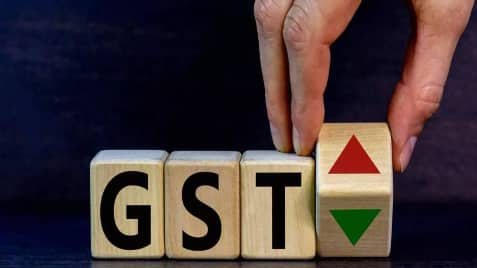GST reforms are boosting consumption, giving OOH advertising a chance to grow. With wider reach, festive demand, and digital integration, outdoor media can secure a bigger share of brand budgets.

GST
The recent reforms introduced by the Goods and Services Tax (GST) Council have triggered a wave of consumption-led growth across industries. While much of the discourse is centered on television, print and digital advertising, the impact on Out-of-Home (OOH) advertising deserves close examination. As consumer markets expand and brand strategies evolve, OOH stands at an inflection point. Its share of advertising expenditure (AdEx) could rise exponentially, provided marketers align with the opportunities that the medium can offer.
The two-tier GST structure of 5% and 18% has simplified taxation across essential goods, consumer durables, automobiles, and insurance products. Lower rates have increased consumer purchasing power while simultaneously improving brand margins for marketing. For advertisers, this translates into a renewed willingness to allocate larger budgets toward high-visibility channels. OOH, traditionally viewed as a complementary medium, is now positioned to benefit from advertisers seeking wider reach and stronger brand recall in a marketplace experiencing revived demand.
When consumption accelerates, brands push harder to stay relevant. Unlike performance-driven channels, OOH thrives in moments of heightened consumer activity, such as festive shopping, automobile launches, or seasonal upgrades. GST 2.0’s affordability dividend ensures that these consumption peaks will become more frequent and more widespread.
One of the most significant effects of GST reforms is the broadening engagement beyond select consumer groups. Reduced tax burdens on essentials, household items, and entry-level automobiles are likely to fuel aspirational consumption among masses. For advertisers, this makes OOH particularly attractive. Unlike digital, the medium is mass and addresses large audience base without incremental cost, in fact DOOH can efficiently target geographies with tailored messaging.
Arterial routes, high streets, and highways including regional clusters are expected to attract larger advertising inflows. With insurance, retail, and FMCG brands looking to tap into newly empowered consumers, OOH placements in these markets will serve as visible proof points of brand presence and trust.
The advertising landscape is no longer about one channel replacing another, advertiser decision-making is shaped by integration across media. OOH’s share of spends will therefore hinge on how well it complements television, digital, print and retail activation. DOOH-OOH can meet advertisers expectation to allocate budgets with sharper return on investment (ROI) metrics. Digital extensions such as QR-enabled billboards, geo-fenced mobile targeting, and Dynamic Content Replacements or DCO will play a central role in ensuring that outdoor placements can be measured and linked to consumer journeys.
GST reforms ahead of the festive season amplify OOH’s relevance. As brands roll out aggressive campaigns, they will opt for mediums that create spectacle and dominate public attention. Outdoor advertising, whether large-format billboards, transit media, or immersive experiential activations, naturally lends itself to this need.
OOH’s physicality ensures high visibility during festive shopping sprees, automobile launches, or lifestyle upgrades. With GST-driven price changes in categories like consumer durables and automobiles, outdoor campaigns can act as the bridge between heightened consumer intent and final purchase. The festive quarter will likely set the tone for how advertisers recalibrate their OOH budgets in 2025 and beyond.
The future of OOH in a GST 2.0 economy will be defined by its ability to reposition itself within advertiser decision-making. The medium has evolved from tactical visibility to strategic integration. Data-driven planning, digital augmentation, and creative localization will be key. Advertisers will increasingly ask not “why OOH?” but “how does OOH amplify my multi-channel strategy?”
As consumer demand rises and brands expand outreach, OOH’s unmissable visibility, geographic precision, and cultural resonance will make it indispensable. If the medium embraces accountability and innovation, its share of AdEx is poised to rise in tandem with the consumption-led expansion that GST reforms have set in motion. For OOH, the opportunity lies in leveraging this momentum to secure a larger, more strategic role in advertiser budgets.
Empower your business. Get practical tips, market insights, and growth strategies delivered to your inbox
By continuing you agree to our Privacy Policy & Terms & Conditions
